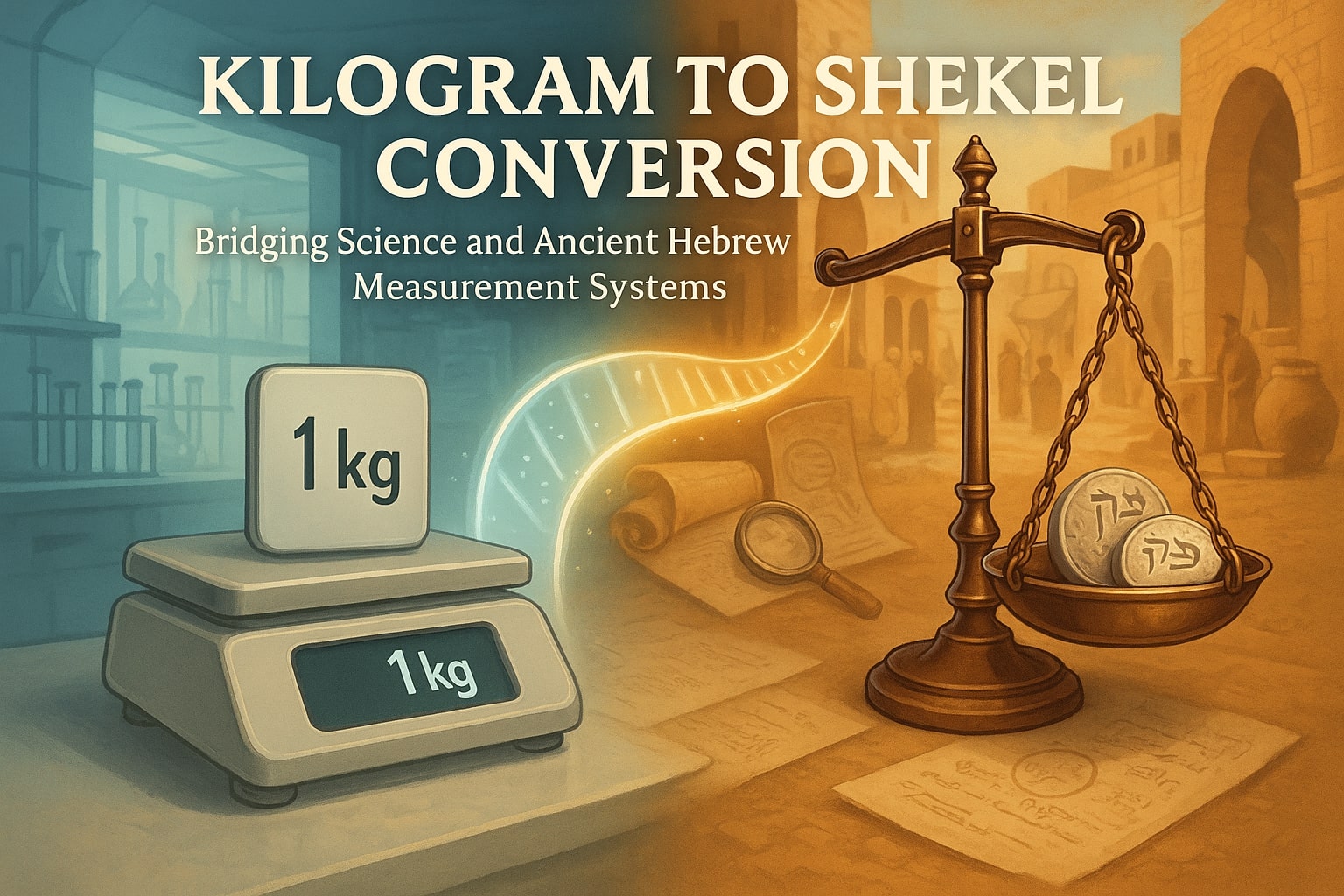Kilogram to Shekel – How to convert kg to Shekel
Converting a kilogram to shekel (Biblical Hebrew unit) may seem unusual today, but it opens a fascinating window into the measurement systems of ancient civilizations. If you're working on historical research, archaeological studies, or curious about ancient Hebrew standards, knowing how to convert kg to Shekel is both practical and intellectually enriching. For other measurements, our Unit Converter Tool offers quick and accurate support across many systems.
Kilogram and Shekel
-
Kilogram (kg) is the standard SI unit for mass. One kilogram equals 1,000 grams and is widely used across science, industry, and daily life. It’s defined using the Planck constant and remains the base unit in modern metric systems. You can also explore other conversions using our Weight Converter Tool.
-
Shekel (Biblical Hebrew) is a historical unit of mass used in ancient Israel and surrounding regions. While it varied slightly by region and period, the most accepted approximation is 1 shekel ≈ 11.4 grams. In Biblical times, the shekel was used for measuring silver, gold, barley, and sacrificial weights.

To convert kilograms to shekels:
1 kg = 1000 grams
1 shekel ≈ 11.4 grams
So the formula is:
Number of Shekels = (Kilogram × 1000) ÷ 11.4
Example:
Convert 2 kg to Shekels:
(2 × 1000) ÷ 11.4 ≈ 175.44 Shekels
You can try this instantly with Jetcalculator’s online Kilogram to Shekel Converter, or check other units via our full Conversion Tool.
Did You Know?
-
Kilogram:
• The kilogram was originally defined in 1795 as the mass of one liter of water at the freezing point.
• The kilogram’s physical prototype, made of platinum and iridium, was stored in France until 2019.
• In the movie Interstellar, weight and mass played critical roles when calculating gravitational effects on different planets. -
Shekel:
• In Exodus 30:13, the "shekel of the sanctuary" is referenced as a sacred measurement in offerings.
• Ancient shekel weights were often made of stone or bronze, marked with symbols to indicate their value.
• Archaeologists have discovered stone shekels in Jerusalem dating back to the First Temple period.
• The Dead Sea Scrolls reference shekels in trade and religious context, highlighting their cultural importance.
A Tale from the Scrolls: The Temple Tribute
In ancient Jerusalem, around the 1st century BCE, Jewish men were required to pay a half-shekel tribute to support the maintenance of the Second Temple. This practice was not just economic but spiritual. According to Josephus, the Jewish historian, the collection of shekels drew pilgrims from across the region, each carrying precise weights to avoid overpaying.
In the Book of Matthew (17:24–27), there’s even a reference to Jesus instructing Peter to find a coin in a fish’s mouth to pay the temple tax — a narrative deeply rooted in the sacred use of shekels.

Conclusion
While we no longer use shekels as a mass unit in daily life, understanding how to convert kg to Shekel bridges the gap between modern science and ancient wisdom. Whether you’re a student, historian, or curious learner, using a reliable Kilogram to Shekel converter like the one at Jetcalculator — or exploring the Conversion Tool and Weight Conversion— can help you engage with the past through numbers.

